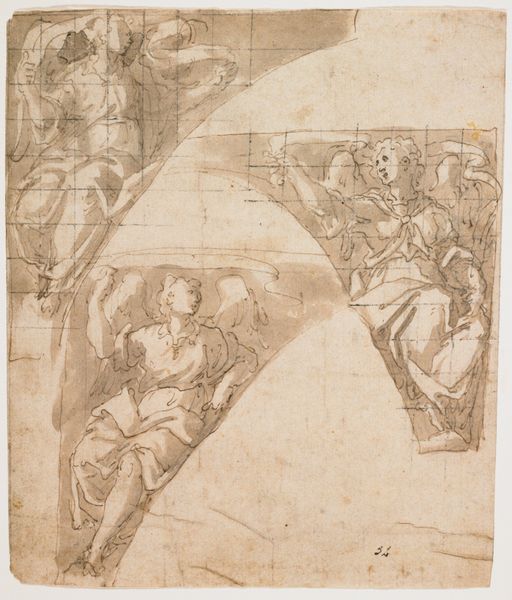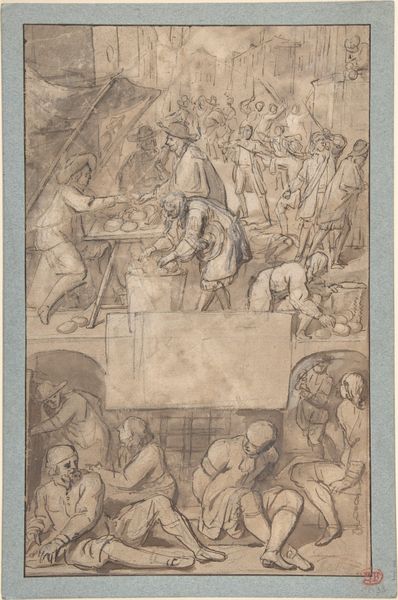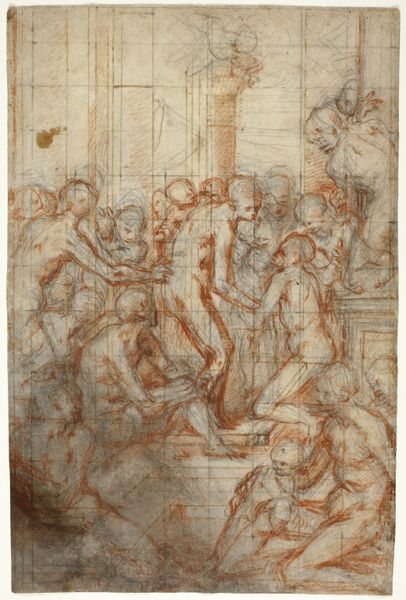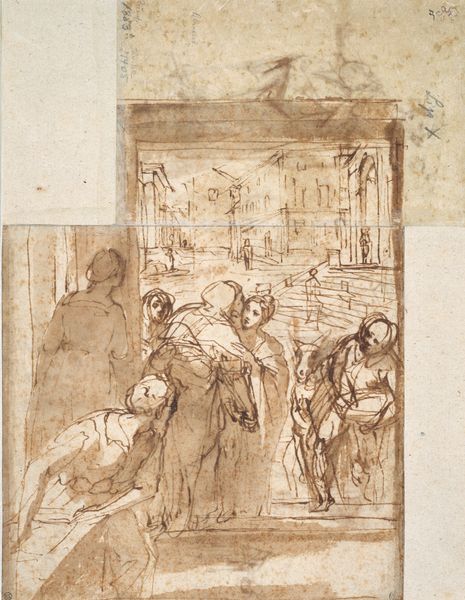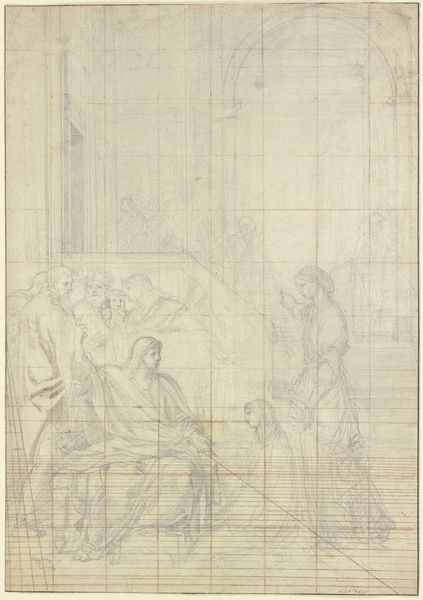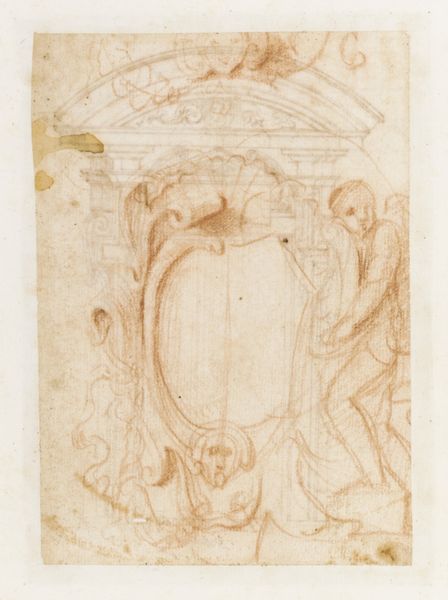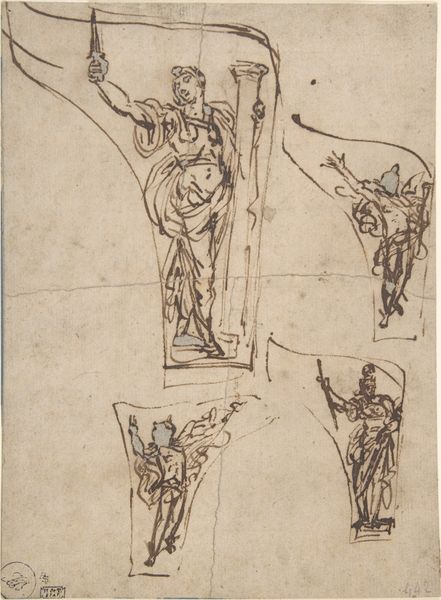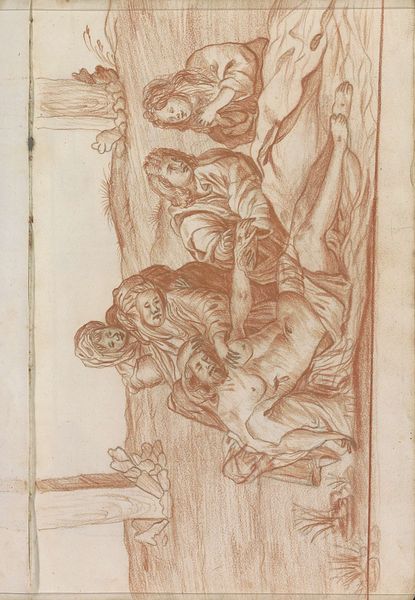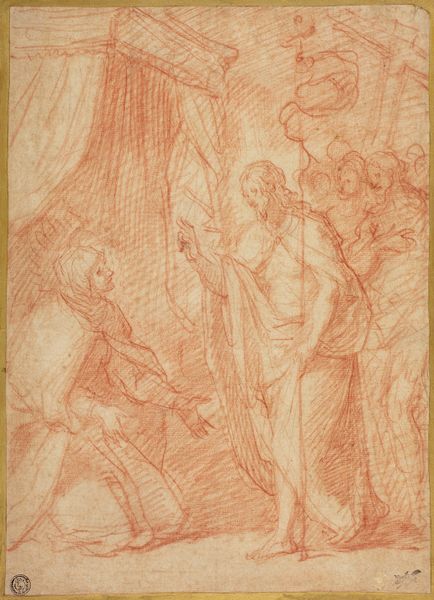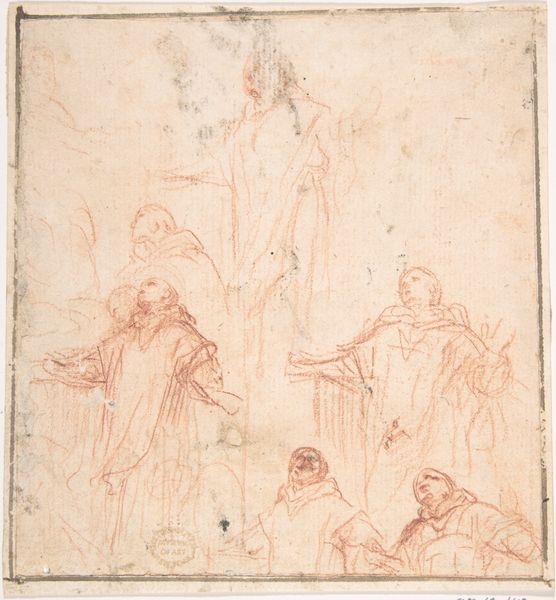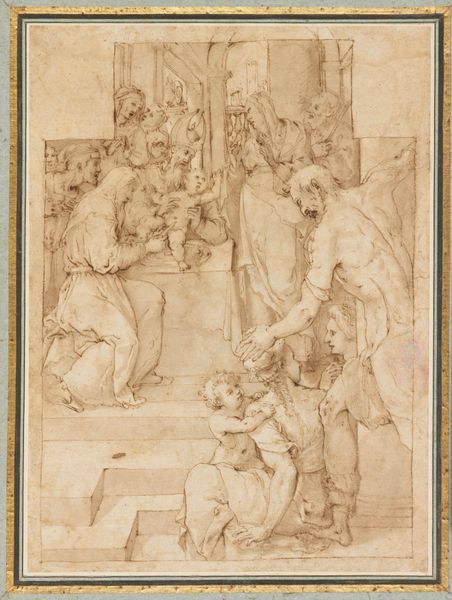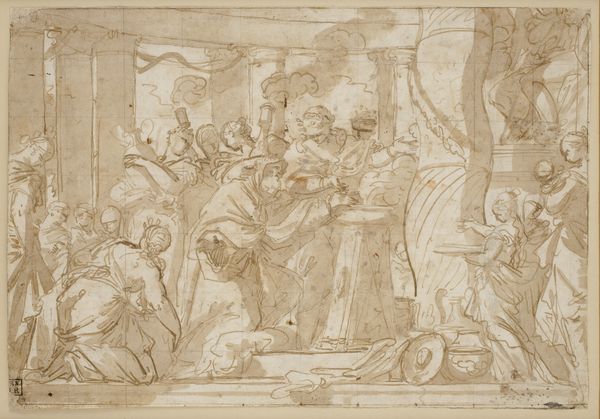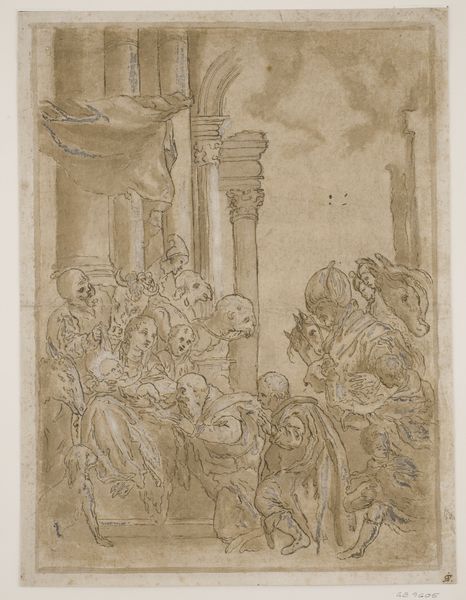
drawing, print, pencil
#
portrait
#
drawing
# print
#
pencil sketch
#
figuration
#
11_renaissance
#
pencil
#
history-painting
#
italian-renaissance
Dimensions: Sheet: 19 5/16 x 14 9/16 in. (49 x 37 cm)
Copyright: Public Domain
Curator: Looking at this print, the color first strikes me: a warm, reddish-brown hue overall... almost like a sepia-toned memory. Editor: Yes, it evokes a kind of nostalgic intimacy, doesn’t it? This is Jean Robert Ango's "The Cumaean Sibyl (after Michelangelo)," dating back to 1767. It’s currently housed here at the Met. He employed a red pencil, resulting in that beautiful, melancholic coloration throughout the print. Curator: After a moment of taking the image in, its dreamlike effect reminds me of looking at memories just out of grasp. What exactly is Ango pointing us towards in the past here? Editor: The "Sibyls" represent figures who bridge the pagan and Christian worlds. In Renaissance interpretations, they were thought to have prophesied the coming of Christ. Ango copies Michelangelo's iconic figure on the Sistine Chapel ceiling, making the Sibyl a symbol of historical and religious continuity and the legacies of creative ingenuity, so his artwork becomes an engagement with Western cultural memory. Curator: Memory. What a concept! Ango captures the Cumaean Sibyl with a very determined focus. It has a quality of aging that I can nearly feel radiating off of her. The detail in her arms, the posture as she pores over text; this seems more dynamic, vibrant and alive than a "copy". Editor: Indeed! Copies were themselves seen as a mode of studying the masters, to participate and extend the past. Here Ango's choices also speak to questions of gendered knowledge and power: why are female figures often relegated to the realm of prophecy, rather than directly holding religious or political authority? Why is their wisdom often framed as intuitive or divinely inspired, rather than intellectual? Curator: A compelling perspective on its potential socio-historic themes! Seeing it this way encourages questions, recontextualization. The art inspires me to wonder about the nature of power. Editor: That tension, between what is revealed and concealed, invites viewers to engage in a continuous dialogue. It suggests the histories art evokes are never entirely settled. Curator: Perhaps then this artwork serves as more of a "remember when", so that "we can" continue asking. Editor: Yes, absolutely. "The Cumaean Sibyl" acts as an invitation into Ango's world and, hopefully, prompts us to delve into our own perspectives too.
Comments
No comments
Be the first to comment and join the conversation on the ultimate creative platform.
